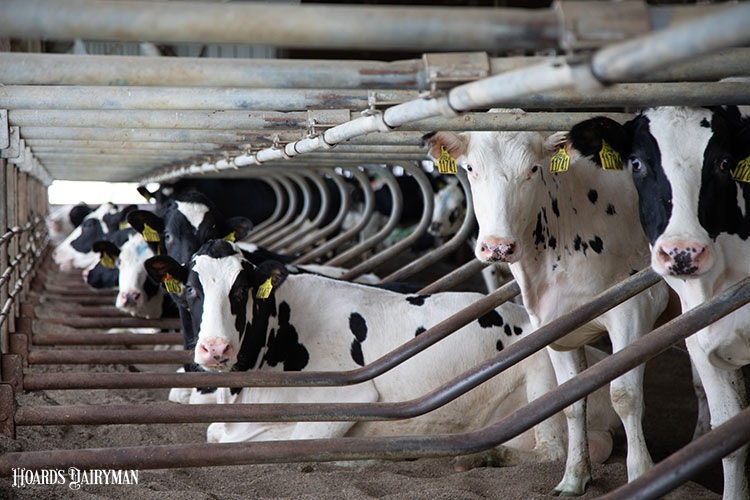
For a hardworking dairy cow, the ability to lie down is one of its most valued behaviors. The benefits of adequate resting time include less stress, more milk production, less lameness, and greater longevity.
For these positive attributes and more, “There’s no reason to not key in on lying time,” said Rick Grant, president of the Miner Institute, during a Penn State “Economic benefits of improved cow comfort” webinar.
“A cow can’t change its requirement for rest; it’s inelastic,” Grant explained, noting that lactating cows require 11 to 14 hours of lying time per day.
“A well-rested cow eats and ruminates more. The data is so clear, and it goes back decades,” shared Grant. He said cows will prioritize lying down over eating and will walk by a bunk full of feed to lie down if stall space is limited. “We don’t want to put a cow in that position where it has to choose. We want it to be able to do both,” he added.
More recent research has shown the value of cows lying down while ruminating, and Grant said 80% of rumination should occur while the cow is resting. “Lying down while ruminating is critical to the cow,” Grant noted. “Management that impairs lying time also affects rumination.”
Grant offered a few options for improving the resting area. One is to modify the stall structure for more freedom of use if there are components that prevent cows from utilizing the stalls properly.
Another key is to improve the resting surface comfort. Grant recommended at least 4 inches of bedding, whatever that bedding material might be. Increase the bedding volume and frequency to maintain that 4-inch depth. It is also important to keep the bedding dry, which may mean grooming stalls more frequently.
He encouraged farmers to use a tool called the stall standing index. This index measures the fraction of cows that are touching a stall but are not lying down, such as cows standing in a stall or perching on the edge. Less than 20% of cows in or touching a stall should be standing. If the number is greater than that, resting time suffers.
Grant said many case studies have been done to evaluate the economic impacts of stall renovation, and he said he never saw a case where the response to improved cow comfort is negative.
“A small investment in cow comfort can have huge, outsized repercussions in terms of performance,” he stated.








